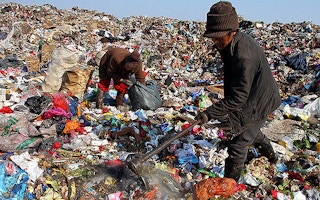China’s success in reducing poverty has driven the poverty reduction globally, and China could set an example for the rest of the world to end extreme poverty, said a senior World Bank official.
“Much of the success in poverty reduction globally has actually been driven by China’s incredible success in reducing poverty,” said Ana Revenga, senior director on poverty and quality at the World Bank, at a teleconference on the institution’s inaugural report Poverty and Shared Prosperity 2016.
The new report which was released on Sunday showed that nearly 800 million people lived on less than 1.9 U.S. dollars a day in 2013. That is around 100 million fewer extremely poor people than in 2012.
According to the report, from 1990 to 2013, the extremely poor fell from 35 per cent of the world’s population to just under 11 per cent of the world’s population.
The progress on extreme poverty was driven mainly by East Asia and Pacific, especially China, Indonesia and India, said the report.
Despite of the good news, “there is no room for complacency,” said Francisco Ferreira, senior advisor to the Development Research Group of the World Bank.
The report showed that half of the world’s extreme poor now live in Sub-Saharan African and another third live in South Asia.
“
Much of the success in poverty reduction globally has actually been driven by China’s incredible success in reducing poverty.
Ana Revenga, senior director on poverty and quality, World Bank
“The pockets of poverty that remain will become increasingly harder to reach and address,” said Ferreira.
The report forecasted that the world would be unable to achieve the goal of ending extreme poverty by 2030, even under optimistic scenarios for growth with no change in inequality. The World Bank set a target of reducing the poverty headcount ratio from 12.4 per cent globally in 2012 to 3 per cent by 2030.
China has been a lesson to the rest of the world on how to tackle extreme poverty in a fast way, said Revenga. “If anybody can show the world how to do that last mile (of ending extreme poverty), it probably is China,” said the senior official.
The report also found that in 34 of 83 countries monitored, income gaps widened as incomes grew faster among the wealthiest 60 per cent of people than among the bottom 40 per cent, despite that within-country inequality has been falling in many places since 2008.
The World Bank called on countries to adopt policies, such as early childhood education, universal health coverage, universal access to quality education, rural infrastructure construction, progressive taxation, cash transfers to poor families, in order to create growth and enable the poorest to take advantage of these opportunities.
This story was published with permission from China.org.cn










